- Faced with uncertainty regarding the United States’ commitment to NATO, France, Germany and Poland are revitalizing the Weimar Triangle;
- Weimar Triangle countries are intensifying efforts to strengthen their own security;
- The resurgence of the Weimar Triangle reflects a more autonomous approach by the EU to security issues.
On the European geopolitical board, a scenario of change and uncertainty is shaping new alliances and defense strategies. Under the uncertainties regarding the United States’ commitment to NATO and in the face of regional threats with the war in Ukraine, this alliance re-emerges as a guarantee of cooperation and solidarity, redefining the geopolitical dynamics in the region.
Thus, it is important to explore the growing role of the Weimar Triangle today, highlighting its importance for European collective security and its impacts on European and global security.
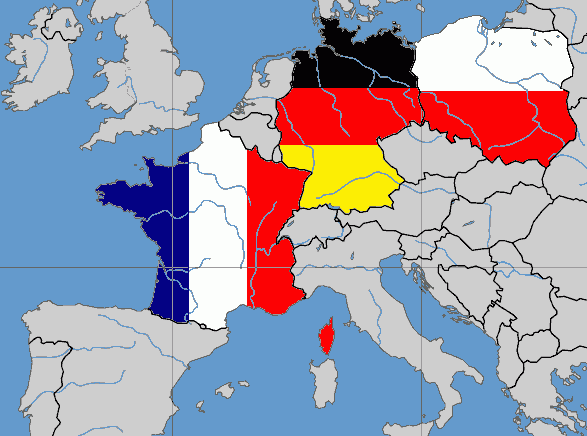
What is the Weimar Triangle Regional Alliance between France, Germany, and Poland?
The Weimar Triangle Regional Alliance is an informal coalition that brings together France, Germany, and Poland in a strategic partnership to promote cooperation and policy coordination on issues of mutual interest – which can be likened to a mini-European Union within the EU. This agreement was first established in 1991 and aims to identify common interests regarding the future of Europe, as well as strengthen ties between the member countries.
These three countries are of great importance in Europe both geographically and economically. France and Germany represent the largest economies in Western Europe, while Poland (a country from the former Eastern Communist bloc and the Warsaw Pact) currently stands out as one of the largest economies in Eastern Europe. Additionally, these nations share borders, which strengthens the geopolitical connection between them.
A highlight of France in this coalition is being the only country among them to possess nuclear weapons. Interestingly, France and Germany have been rivals in the past, with a history marked by conflicts. Germany, on the other hand, has the largest population in Europe and is currently the third-largest economy in the world.
Although Germany also has a complex history with Poland, including the invasion during World War II, relations between these countries have evolved, as the Weimar Triangle was originally established as the main space supporting reconciliation between Germany and Poland, drawing inspiration from the successful experience of cooperation between France and Germany.
Despite Poland’s past being marked by conflicts, today, the country emerges as one of the leading military and economic powers on the continent, a notable development after decades of Soviet influence and years of post-war reconstruction.
Over the years, the coalition has held regular meetings between its foreign ministers to discuss a variety of topics, including security, defense and foreign policy. However, the political importance of this alliance has declined in certain periods, especially after the rise of an anti-European Union government in Poland in 2016.
During this period, the Visegrad Group – made up of the Czech Republic, Hungary, Poland and Slovakia, which came together in 1991 to promote the integration of its members – gained more prominence, in part due to the regionalist inclination of the Polish government at the time, which opposed to Western Europe.
However, under the current Polish government, which is pro-European Union, the Visegrad Group has lost relevance. During a Summit in Prague, Polish Prime Minister Donald Tusk expressed doubts about the group’s continuity.
Tusk highlighted the importance of unity in resisting Russian influence, emphasizing the need for Western solidarity, especially in relation to the Russian-Ukrainian war, with Hungary and Slovakia refusing to send military aid to Ukraine and preferring peace negotiations.
He announced his intention to confront Hungarian Prime Minister Viktor Orban over the need for unequivocal support for Ukraine within NATO and the EU, indicating a possible redefinition of the Visegrad Group’s role in European geopolitics.
Although there are comparisons between the two alliances, the Weimar Triangle appears to be more focused on issues of defense and strategic cooperation within Europe, while the Visegrad Group appears to focus more on issues related to migration and regional collaboration. These different priorities may explain the divergence of objectives of each coalition, since one does not cancel the other.
In this way, the leaders of the three countries participating in the Weimar Triangle expressed a renewed commitment to strengthening cooperation, especially in light of current geopolitical tensions in Europe, including continued Russian aggression in Ukraine.
How has the Weimar Triangle as a geopolitical alliance taken on new life with the future of NATO in question due to Trump?
The Weimar Triangle has resurged in a context of uncertainty about the future of NATO, especially given the controversial statements made by Trump. With the United States threatening to abandon NATO allies that contribute less than 2% of their GDP to the maintenance of the defense alliance, the coalition has assumed new importance.
- Sending weapons to Ukraine:
- In response to the potential fragility of NATO under Trump’s policies, the countries of the Weimar Triangle have chosen to strengthen their own security.
- One concrete measure adopted was the sending of weapons to Ukraine, seeking to expand collective military support and resist the growing tension in the region, especially amid the conflict with Russia.
- Issuance of EU debt bonds for defense:
- During the Davos conference, French President Emmanuel Macron endorsed the idea of issuing specific debt bonds from the European Union (EU) for defense purposes.
- This proposal aims to establish a new joint EU debt fund aimed at strengthening the continent’s defense capability, in an effort to ensure security amid global uncertainty.
- Strategic Technologies Platform for Europe (STEP):
- In the face of hesitation from some member states and the European Commission regarding a new round of EU debt issuance, the Strategic Technologies Platform for Europe (STEP) was created.
- This platform represents a smaller-scale financing alternative aimed at boosting innovation and technological security in the region, as a complement to the full European sovereignty fund.
- Financial integration through the European Union of Markets (EMU):
- Macron emphasized the importance of the European Union of Markets (EMU) as one of his priorities, seeking deeper financial integration within the continent.
- This initiative aims to facilitate the free movement of economies and investments, strengthening economic cohesion and financial stability in the EU.
- Commitment to EU sovereignty and solidarity:
- The Weimar Triangle coalition reiterated its commitment to the sovereignty of the European Union and solidarity among its members.
- Seeking to address common challenges and promote regional stability, the countries involved reaffirmed their cooperation and interest in strengthening common bonds and interests in the region.
The Weimar Triangle as a starting point for strengthening the EU’s strategic sovereignty
The quest to reduce dependence on transatlantic alliances and strengthen the EU’s ability to act independently on security and defense issues has been a recurring theme in European political and strategic discussions.
There are several reasons underlying this movement:
- US statements and policies: Former President Donald Trump’s statements and critical rhetoric towards NATO partners, along with his willingness to condition military protection on members’ financial contributions, have raised concerns about the reliability of the transatlantic alliance.
- Increased security threats: Russia’s aggressions against Ukraine, evidenced since the annexation of Crimea in 2014 to the aggressive war initiated in 2022 in eastern Ukraine, have highlighted the need for a more independent approach by the EU on security matters. Additionally, emerging challenges such as international terrorism and instability in regions neighboring the EU also emphasize the importance of autonomous defense capability.
- Evolution of EU defense policy: Over the years, the EU has advanced in integrating its defense policy. Initiatives such as Permanent Structured Cooperation (PESCO) and the European Defense Fund (EDF) aim to strengthen the defense capabilities of Member States and promote greater industrial cooperation in the defense sector.
- Increase in defense spending: EU countries have gradually increased their defense spending, reflecting a renewed commitment to collective security and strategic autonomy. According to NATO data, until the pandemic in 2020, defense spending in Europe and Canada increased for the sixth consecutive year, reaching the highest annual growth since 2015.
The EU’s quest to reduce dependence on transatlantic alliances and reinforce its ability to act independently on security and defense issues is driven by a combination of political, strategic, and operational factors, reflecting a desire for greater autonomy and geopolitical assertiveness on the international stage.
The announcement of the new Weimar Triangle for Artificial Intelligence
Recently, a joint initiative between Germany, France, and Poland, called the “Weimar Triangle for Artificial Intelligence,” was announced. This political alliance aims to boost cooperation and coordination between the three countries in the development and implementation of artificial intelligence (AI) technology, aligning with EU policies in this sector.
The idea behind the Weimar Triangle for AI is that by joining forces, these countries can compete more effectively with global leaders such as the United States and China in the field of AI. Collaboration between Germany, France, and Poland aims not only to drive innovation in the European economy but also to ensure that advances in AI respect EU values and principles.
As previously mentioned, the coalition was established to promote cooperation on broader European issues, and is now being adapted to also address challenges related to AI, at a time when the EU recognizes the strategic importance of the technology for its future, being another example of how the alliance is coming back to life.
What is the importance of the Weimar Triangle for geopolitics?
The Weimar Triangle can be seen as a starting point for a larger union among European Union countries, especially to work together on defense. While it is more challenging to unite 27 countries than just three, this could be the first step towards something bigger, involving the entire European Union.
The coalition could also help promote greater military collaboration among the countries involved, enabling the sharing of resources and expertise in key areas such as research and development, joint production, and military logistics.
Additionally,this partnership could facilitate the alignment of defense and security policies among the members of the Weimar Triangle, thereby strengthening the collective response capability to regional threats.
However, although the Weimar Triangle may help bring together countries with divergent opinions, such as pro-US Poland and protectionist France, some experts highlight the need for broader cooperation to address defense challenges. The possible US withdrawal from NATO or a reduction in its activities, they argue, would be irreplaceable in the short term, especially against threats like Russia.
Despite the opportunities for strengthening military cooperation and improving relations between the countries involved, as noted by experts, there are still challenges to be overcome. Cooperation within the coalition may be a first step, but it is believed that a robust defense alliance would require broader collaboration, involving other European countries as well.

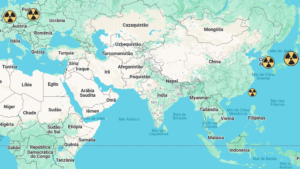

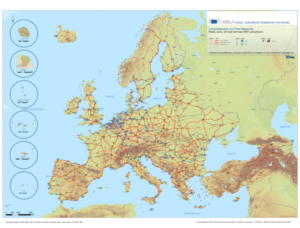
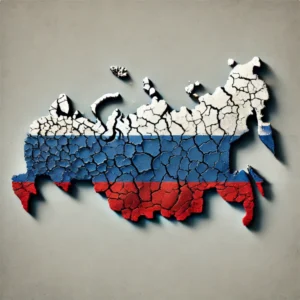





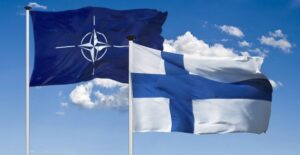




Be First to Comment